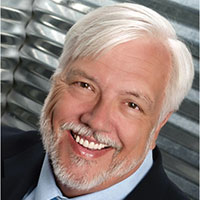Recently, the Association of American Medical Colleges (AAMC) reiterated its projection of a physician shortage in the United States, predicting a shortfall of up to 121,300 physicians by 2030. The shortage would affect primary care as well as medical and surgical specialties. These projections are consistent with prior estimates and, AAMC says, take into account both utilization of NPs and PAs and future changes in how care is delivered.1
However, other entities have suggested we are misinterpreting the situation. The Institute of Medicine (IOM) has argued that there is no physician shortage. According to their analysis, the health care system isn’t undermanned—rather, it’s inefficient and relies too heavily on physicians and not enough on advanced practice providers. Furthermore, the IOM posits that many of the studies upon which physician workforce projections have been based fail to account for advances in medicine and technology that impact care delivery: telehealth, new medications, and medical devices that give patients a more active role in their health maintenance.2
Who’s right? You might say, “Who cares?” but this isn’t simply a matter of institutional reputation; the data have informed action plans for offsetting the projected shortage. Since 2002, medical schools have increased class sizes by 30% and are working to ensure that the supply of physicians will be sufficient to meet future needs—even though funding for residency training has been frozen since 1997. At the same time, many thought leaders—including the IOM—have recognized NPs and PAs as significant contributors to the health care workforce. In 2007, for example, Cooper called on the NP and PA professions to expand their training capacity, predicting that neither would have a supply of practitioners to meet needs in the event of a physician shortage.3
Both professions took that message to heart. There are now more than 123,000 certified PAs (70% of whom work in specialty practice) and 248,000 licensed NPs (87% in primary care) in the United States.4,5 There are 239 accredited PA programs (including those with provisional or probationary status), with the number of new graduates per year expected to reach 18,000 by 2026 (compared to 9,000 in 2018).6,7 There are about 400 academic institutions in the US that have an NP program; in 2016-2017, more than 26,000 new graduates completed their training.5,8 Overall, the Bureau of Labor Statistics projects that by 2024 the NP profession will have grown by 36%, the PA profession by 37%, and the physician population by 13% (excluding anesthesiologists and surgeons).9
There is no argument that NPs and PAs are making an enormous impact on the quality and accessibility of health care in this country. But I am starting to hear rumblings that we may be educating too many NPs and PAs—especially if the physician shortage is not as dire as predicted.
This entire conversation takes me back to the 1970s, when the Graduate Medical Education National Advisory Committee (GMENAC) projected a surplus of physicians, and a moratorium was placed on medical school enrollment. Those projections were validated and repeated through the 1990s; in fact, the aforementioned Cooper was among the first to flip the message around, using new calculations and considerations to project a physician shortage.10
GMENAC is a classic example of what happens when people and entities overreact to a projection of some kind. If there is a physician shortage today, GMENAC is probably partly responsible because their prediction of an oversupply triggered an arguably over-the-top response. Everyone worked so hard to avoid a surplus that they are creating a deficit!
Continue to: As I listen to...

